Many MBBS students find pediatrics to be a challenging subject due to its vast syllabus and the need for deep understanding. It can be overwhelming to know which books are most helpful for grasping key concepts.
If you’re struggling to choose the right resources, you’re not alone. We understand how important it is to have the right materials for your studies.
This article will guide you through a complete list of essential pediatrics books for MBBS students, ensuring you have the best tools to succeed and build a strong foundation in this important subject.
Pediatrics Books for MBBS: Review Books
Review books play a crucial role in your pediatric education. They provide a concise summary of key concepts, highlight important information, and often include practice questions to help you assess your understanding and prepare for examinations.
1) Review of Pediatrics by Tarun Mehra
Review of Pediatrics by Tarun Mehra is a popular choice among MBBS students in India.
This concise review book covers all major topics in pediatrics and is specifically designed to help students prepare for examinations.
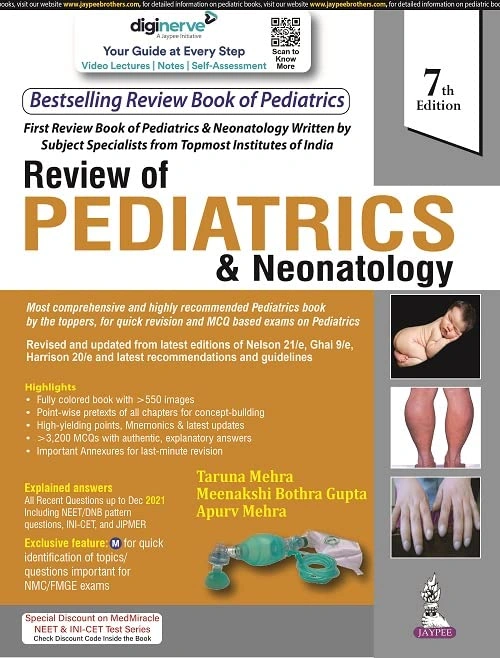
Strengths:
- Concise and exam-oriented: This book distills essential information into a manageable format, making it ideal for quick review and exam preparation.
- Includes MCQs and other practice questions: Review of Pediatrics provides ample opportunities for self-assessment with a variety of practice questions, including MCQs, short answer questions, and clinical vignettes.
- Affordable: Compared to comprehensive textbooks, Review of Pediatrics is relatively affordable, making it accessible to a wider range of students.
- Focuses on high-yield topics: The book prioritizes high-yield topics that are commonly tested in MBBS examinations.
Weaknesses:
- Not a standalone textbook: Review of Pediatrics is best used in conjunction with a core textbook to gain a comprehensive understanding of pediatrics.
- May lack depth: Due to its concise nature, this review book may not provide in-depth coverage of all topics.
How to use Review of Pediatrics effectively:
- Use it after studying a core textbook: This review book is most effective when used to reinforce your understanding of concepts learned from a core textbook.
- Practice the questions: The practice questions in Review of Pediatrics are valuable tools for self-assessment and exam preparation.
- Focus on weak areas: Identify your weak areas and use this review book to target your studying.
2) Illustrated Textbook of Pediatrics by Ghai
Illustrated Textbook of Pediatrics by Ghai is another well-regarded Indian textbook that stands out for its visual approach to learning.
The 8th edition (published in 2018) features numerous illustrations, diagrams, and clinical images that enhance understanding and make the learning process more engaging.

Strengths:
- Visually appealing: The abundant illustrations and clinical images in Illustrated Textbook of Pediatrics make it a visually stimulating and engaging resource.
- Good for quick review: The concise text and visual aids make this textbook ideal for quick review of key concepts.
- Clinical focus: Illustrated Textbook of Pediatrics incorporates clinical cases and real-world examples to illustrate key concepts and demonstrate their practical application.
- Includes recent advances: The 8th edition includes updated information on recent advances in pediatrics, such as new vaccines, therapies, and diagnostic techniques.
Weaknesses:
- May lack depth compared to other textbooks: While providing a good overview of pediatrics, Illustrated Textbook of Pediatrics may not delve into as much detail as some other textbooks.
- May not be suitable for all learning styles: While the visual approach is beneficial for many students, it may not be ideal for those who prefer text-based learning.
How to use Illustrated Textbook of Pediatrics effectively:
- Use it for visual learning: If you are a visual learner, this textbook can be a valuable resource for understanding complex concepts.
- Supplement with other resources: Use Illustrated Textbook of Pediatrics in conjunction with other textbooks and online resources for a more comprehensive understanding of pediatrics.
- Focus on the clinical cases: The clinical cases in this textbook provide valuable insights into real-world applications of pediatric knowledge.
Review books can help you consolidate your knowledge and prepare for exams, while core textbooks provide a solid foundation.
Pediatrics Books for MBBS: Core Textbooks
Core textbooks are the cornerstones of your pediatric education. They provide a comprehensive and systematic overview of the field, covering a wide range of topics from basic science principles to clinical management strategies.
These textbooks are your go-to resources for building a solid foundation in pediatrics.
1) Nelson Textbook of Pediatrics
Considered the gold standard in pediatric textbooks, Nelson Textbook of Pediatrics is renowned for its comprehensive coverage and authoritative content.
Now in its 21st edition (published in 2020), this tome of knowledge continues to be the definitive resource for medical students, residents, and practitioners alike.
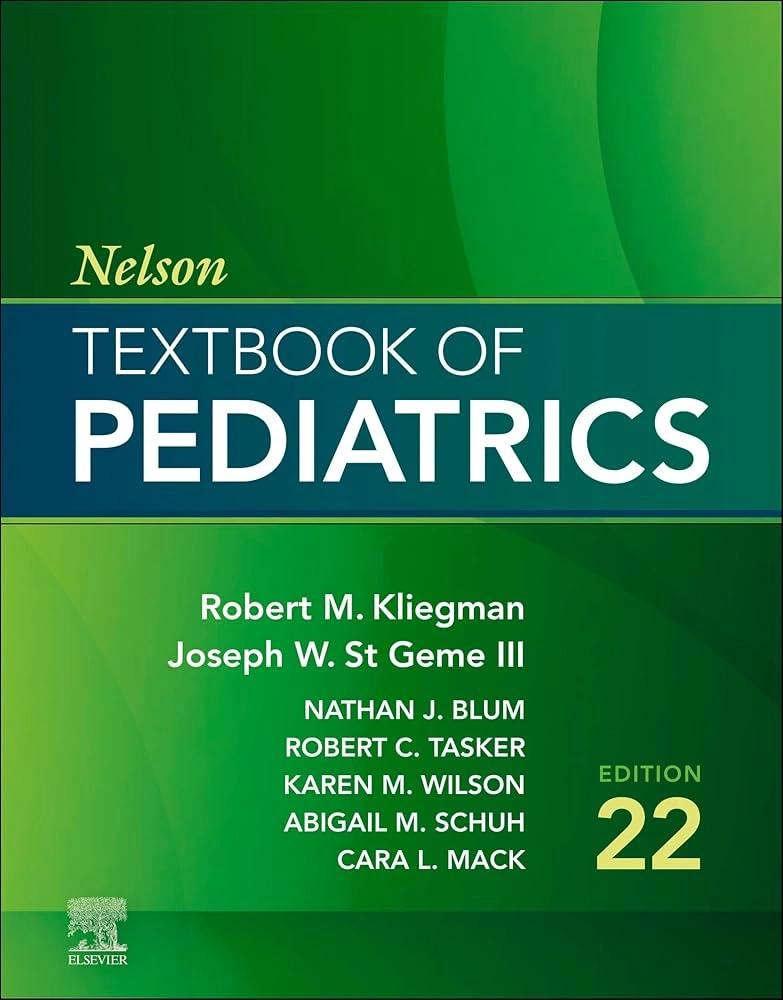
Strengths:
- Unparalleled comprehensiveness: Nelson Textbook of Pediatrics leaves no stone unturned, encompassing virtually every aspect of pediatric medicine. From genetics and embryology to infectious diseases and oncology, this book provides in-depth coverage of all major topics.
- Authored by leading experts: The contributing authors are recognized leaders in their respective fields, ensuring that the information presented is accurate, up-to-date, and evidence-based.
- Visually engaging: The textbook is richly illustrated with high-quality images, diagrams, and tables that enhance understanding and make complex concepts more accessible.
- Continuously updated: With each new edition, Nelson Textbook of Pediatrics incorporates the latest advances in research and clinical practice, ensuring that you have access to the most current information. The 21st edition includes expanded coverage of genetics, immunology, and pharmacology, reflecting the evolving landscape of pediatric medicine.
Weaknesses:
- Daunting size and density: The sheer volume of information contained within Nelson Textbook of Pediatrics can be overwhelming for beginners. The text is dense and requires dedicated effort to navigate effectively.
- Significant financial investment: As a comprehensive and highly regarded textbook, Nelson Textbook of Pediatrics comes with a hefty price tag, which may be a barrier for some students.
How to use Nelson effectively:
- Start with specific topics: Don’t try to read the entire book from cover to cover. Instead, focus on specific topics relevant to your current studies or clinical rotations.
- Use the index and table of contents: These tools will help you quickly locate the information you need.
- Pay attention to the illustrations: The images, diagrams, and tables in Nelson Textbook of Pediatrics are valuable learning aids. Take the time to study them carefully.
- Supplement with other resources: Use Nelson Textbook of Pediatrics in conjunction with other learning resources, such as review books, online resources, and clinical experiences.
2) Forfar and Arneil’s Textbook of Pediatrics
Forfar and Arneil’s Textbook of Pediatrics distinguishes itself with its clear and concise writing style, making it a more approachable option for students who may find Nelson overwhelming.
The 9th edition (published in 2018) maintains this tradition of clarity while providing updated information and a strong clinical focus.
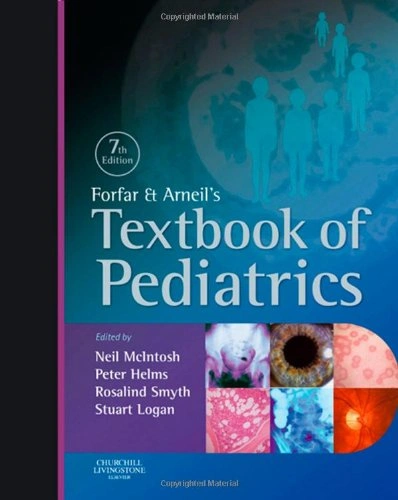
Strengths:
- Clarity and conciseness: This textbook presents complex information in a clear and concise manner, making it easier to understand and digest.
- Strong clinical emphasis: Forfar and Arneil’s Textbook of Pediatrics prioritizes clinical relevance, providing practical guidance on the diagnosis and management of common pediatric conditions.
- Well-organized structure: The textbook follows a logical structure, with chapters organized by organ system and disease category. This makes it easy to navigate and find the information you need.
- International perspective: While maintaining a strong foundation in general pediatrics, Forfar and Arneil’s Textbook of Pediatrics also incorporates global health perspectives, addressing health challenges faced by children in different parts of the world.
Weaknesses:
- Less comprehensive than Nelson: While covering a broad range of topics, Forfar and Arneil’s Textbook of Pediatrics may not delve into as much depth as Nelson on certain subjects.
- Fewer visual aids: Compared to Nelson, this textbook has fewer illustrations and diagrams.
How to use Forfar and Arneil’s effectively:
- Use it as a starting point: This textbook is an excellent introduction to pediatrics, providing a solid foundation in core concepts.
- Focus on clinical applications: Pay attention to the clinical cases and management guidelines presented throughout the text.
- Supplement with other resources: Use Forfar and Arneil’s Textbook of Pediatrics in conjunction with other textbooks, online resources, and clinical experiences to gain a more comprehensive understanding of pediatrics.
3) Oski’s Pediatrics: Principles & Practice
Oski’s Pediatrics: Principles & Practice takes a unique approach by focusing on clinical application and problem-solving.
The 5th edition (published in 2016) emphasizes clinical reasoning and provides a framework for approaching pediatric cases.
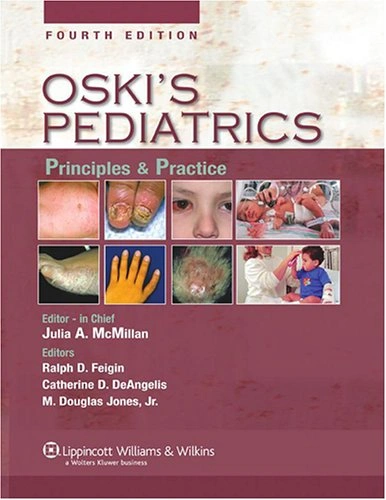
Strengths:
- Clinical reasoning focus: This textbook goes beyond simply presenting facts and figures. It encourages students to think critically and develop their clinical decision-making skills.
- Abundant tables and algorithms: Oski’s Pediatrics provides numerous tables and algorithms that help students organize their thoughts and approach clinical problems systematically.
- Case-based learning: The textbook incorporates clinical cases throughout, allowing students to apply their knowledge and develop problem-solving skills.
- Emphasis on evidence-based practice: Oski’s Pediatrics emphasizes the importance of evidence-based medicine, providing references and supporting data for the information presented.
Weaknesses:
- Less emphasis on basic science: While covering the essential basic science principles, Oski’s Pediatrics may not delve into as much depth as other textbooks.
- May not be as comprehensive: This textbook may not cover all topics in as much detail as Nelson or Forfar and Arneil’s.
How to use Oski’s effectively:
- Use it to develop clinical reasoning skills: Pay close attention to the clinical cases and the accompanying discussions.
- Utilize the tables and algorithms: These tools can help you organize your thoughts and approach clinical problems systematically.
- Supplement with other resources: Use Oski’s Pediatrics in conjunction with other textbooks and online resources to gain a more comprehensive understanding of pediatrics.
4) Cloherty and Stark’s Manual of Neonatal Care
Cloherty and Stark’s Manual of Neonatal Care is an indispensable resource for any medical student interested in neonatology.
This concise yet comprehensive manual provides practical guidance on the care of newborns, from the delivery room to the neonatal intensive care unit (NICU).
The 8th edition (published in 2017) reflects the latest advances in neonatal medicine.
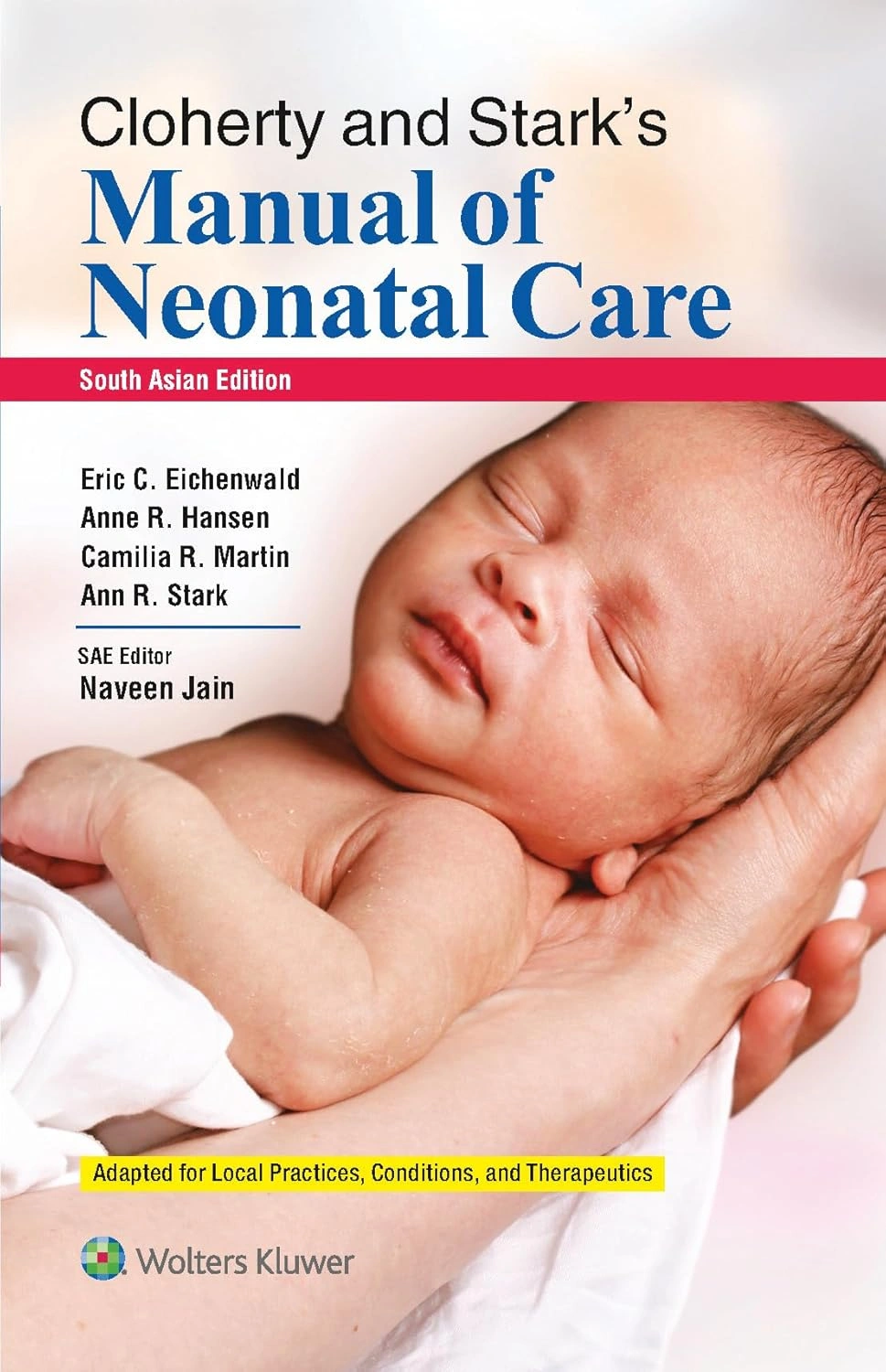
Strengths:
- Practical focus: Cloherty and Stark’s Manual of Neonatal Care prioritizes practical information and clinical skills, equipping students with the knowledge they need to care for newborns.
- Concise and portable: The manual’s concise format makes it easy to use and carry, making it an ideal resource for quick reference in clinical settings.
- Up-to-date information: The 8th edition includes the latest guidelines and recommendations for neonatal care, ensuring that you have access to the most current information.
- Strong emphasis on procedures: The manual provides detailed instructions on performing common neonatal procedures, such as resuscitation, intubation, and umbilical catheterization.
Weaknesses:
- Limited scope: As a manual focused on neonatal care, Cloherty and Stark’s does not cover other areas of pediatrics.
- May not be sufficient for in-depth study: While providing a comprehensive overview of neonatal care, the manual may not be sufficient for in-depth study of specific neonatal conditions.
How to use Cloherty and Stark’s effectively:
- Use it as a quick reference guide: The manual’s concise format makes it ideal for quick reference in clinical settings.
- Focus on practical skills: Pay close attention to the sections on procedures and clinical management.
- Supplement with other resources: Use Cloherty and Stark’s Manual of Neonatal Care in conjunction with other textbooks and online resources for a more comprehensive understanding of neonatology.
For a deeper understanding of specific topics, you can refer to specialized textbooks.
Pediatrics Books for MBBS: Books for Specific Topics
While core textbooks provide a broad overview of pediatrics, specialized texts delve deeper into specific areas of interest.
These books are invaluable for students who wish to gain a more in-depth understanding of particular pediatric subspecialties or disease categories.
A. Neonatology
1) Avery’s Diseases of the Newborn:
A cornerstone of neonatal medicine, Avery’s Diseases of the Newborn provides a comprehensive and authoritative overview of all aspects of newborn care.
The 10th edition (published in 2018) covers a wide range of topics, from fetal development and physiology to neonatal intensive care and the management of specific neonatal conditions.
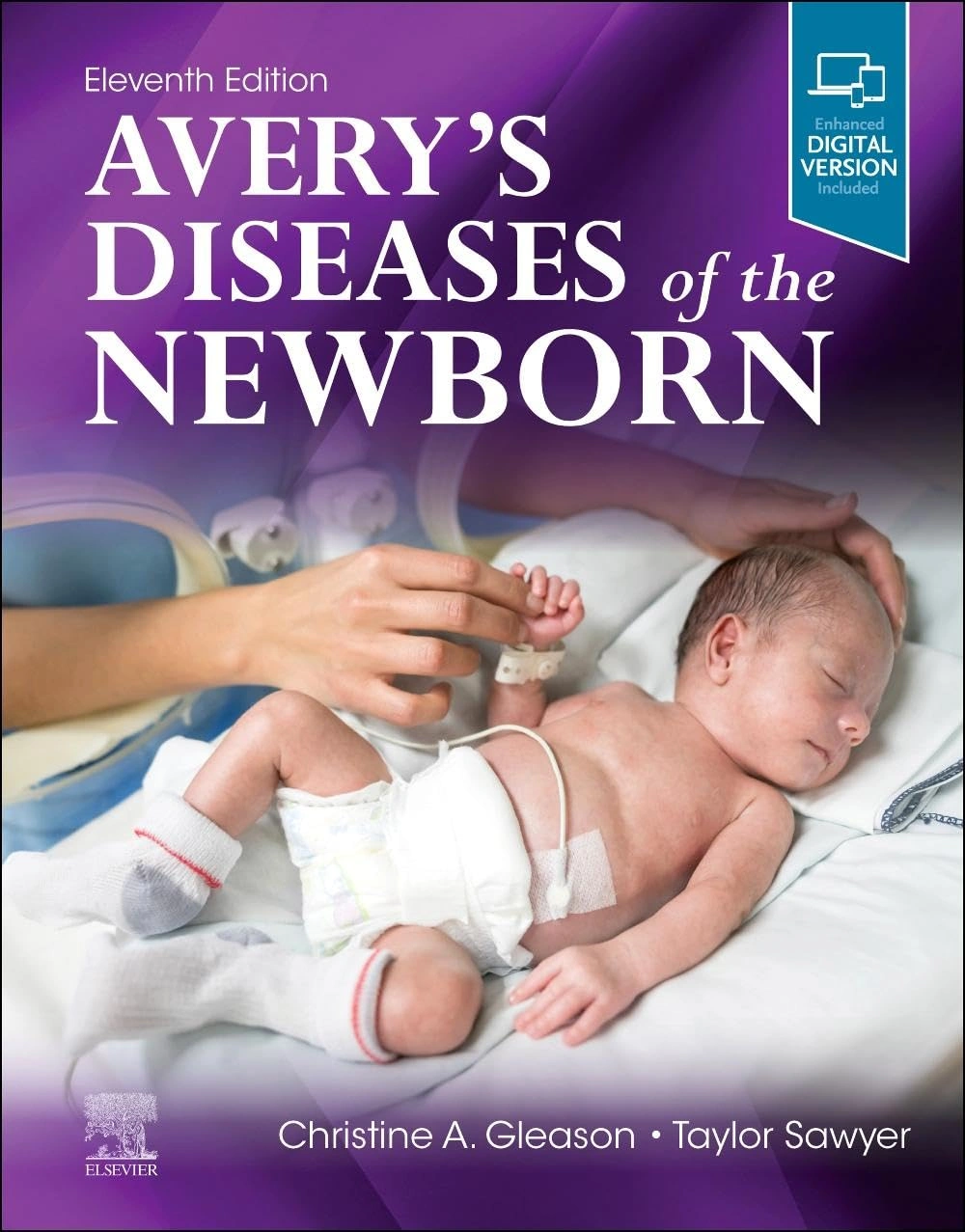
Strengths:
- Comprehensive coverage: Avery’s Diseases of the Newborn provides in-depth coverage of all aspects of neonatology, making it a valuable resource for medical students, residents, and practitioners.
- Authored by leading experts: The contributing authors are renowned experts in their respective fields, ensuring that the information presented is accurate and up-to-date.
- Evidence-based approach: Avery’s Diseases of the Newborn emphasizes evidence-based practice, providing references and supporting data for the information presented.
- Includes recent advances: The 10th edition incorporates the latest advances in neonatal care, including new therapies, diagnostic techniques, and management guidelines.
Weaknesses:
- Can be dense and challenging: The sheer volume of information and the detailed nature of the text can be challenging for beginners.
- Focuses solely on neonatology: This textbook does not cover other areas of pediatrics.
2) Manual of Neonatal Respiratory Care:
This manual provides practical guidance on the management of respiratory conditions in newborns.
The 7th edition (published in 2021) covers a wide range of topics, from basic respiratory physiology to advanced ventilation techniques.
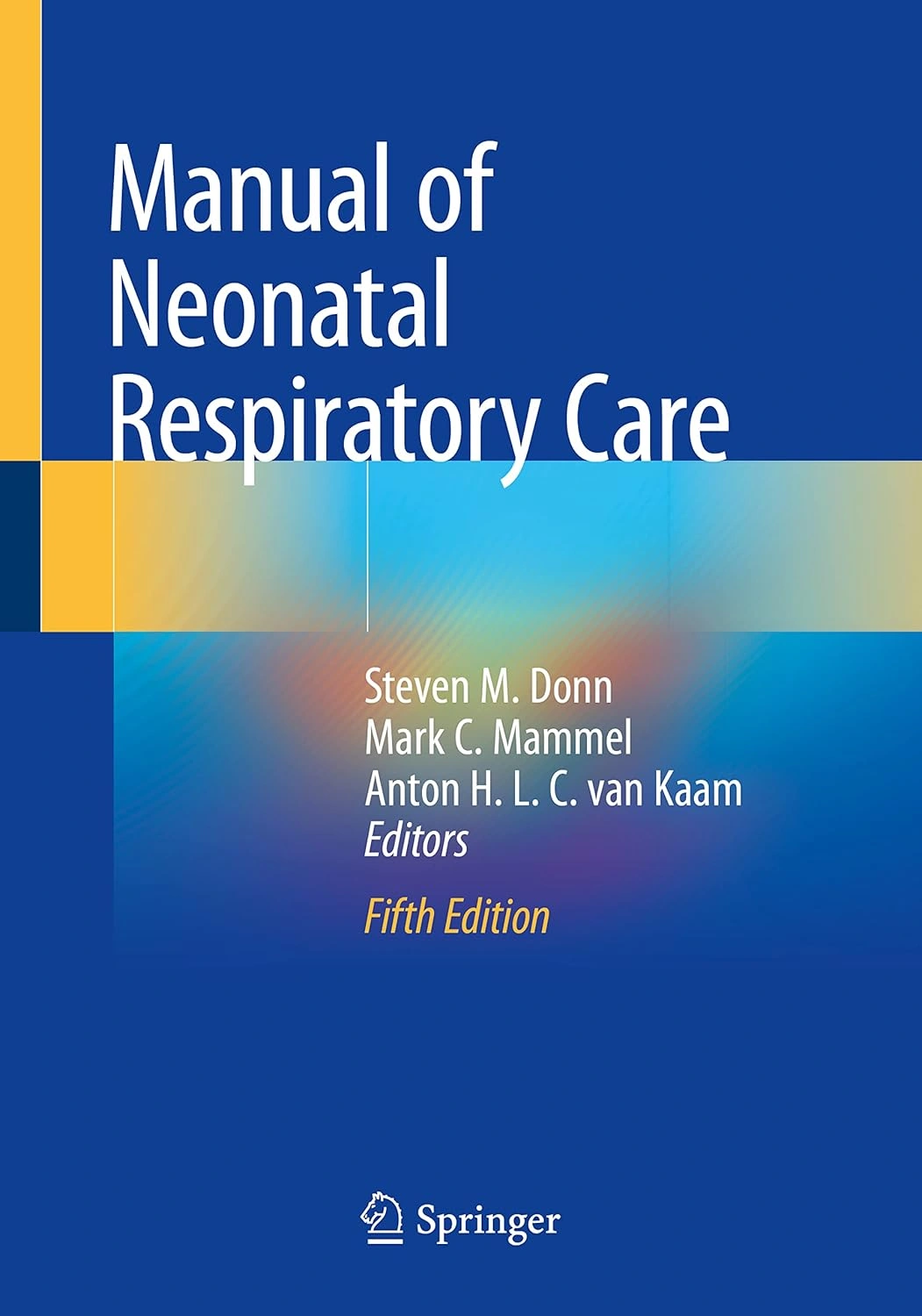
Strengths:
- Practical focus: Manual of Neonatal Respiratory Care emphasizes practical skills and clinical applications, making it a valuable resource for medical students, residents, and other healthcare professionals involved in neonatal care.
- Concise and easy to use: The manual’s concise format and clear writing style make it easy to understand and apply the information presented.
- Up-to-date information: The 7th edition includes the latest guidelines and recommendations for neonatal respiratory care.
- Includes numerous illustrations and diagrams: The manual features numerous illustrations and diagrams that enhance understanding and clarify complex concepts.
Weaknesses:
- Narrow focus: This manual focuses solely on respiratory care in neonates.
- May not be sufficient for in-depth study: While providing a comprehensive overview of neonatal respiratory care, the manual may not be sufficient for in-depth study of specific respiratory conditions.
B. Pediatric Cardiology
1) Moss and Adams’ Heart Disease in Infants, Children, and Adolescents:
This is a leading textbook on pediatric cardiology, providing comprehensive coverage of all aspects of heart disease in children.
The 10th edition (published in 2019) includes the latest advances in diagnosis, treatment, and management.
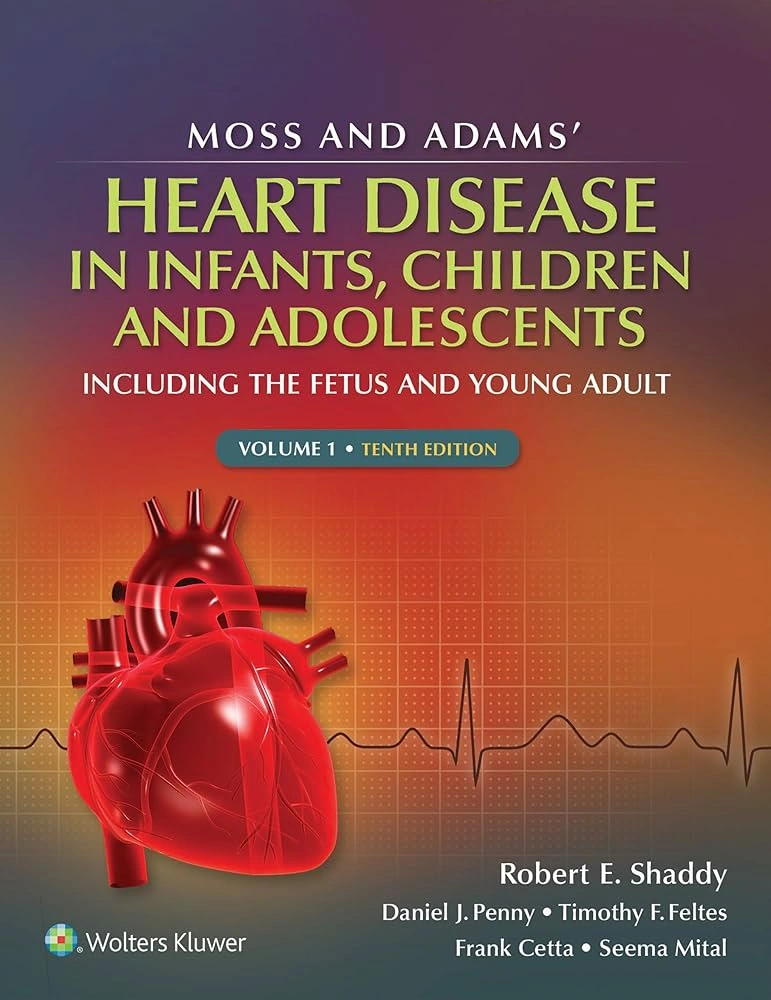
Strengths:
- Comprehensive and authoritative: Moss and Adams’ Heart Disease in Infants, Children, and Adolescents is widely regarded as the definitive textbook on pediatric cardiology.
- Covers a wide range of topics: The textbook encompasses all aspects of heart disease in children, from congenital heart defects to acquired heart conditions.
- Includes numerous illustrations and diagrams: The text is richly illustrated with high-quality images, diagrams, and tables that enhance understanding and clarify complex concepts.
- Evidence-based approach: The textbook emphasizes evidence-based practice, providing references and supporting data for the information presented.
Weaknesses:
- Can be challenging for beginners: The comprehensive nature of the textbook and the detailed information presented can be challenging for beginners.
- Focuses solely on pediatric cardiology: This textbook does not cover other areas of pediatrics.
C. Pediatric Neurology
1) Fenichel’s Clinical Pediatric Neurology:
This textbook provides a comprehensive overview of pediatric neurology, covering a wide range of neurological disorders that affect children.
The 8th edition (published in 2017) includes the latest advances in diagnosis, treatment, and management.
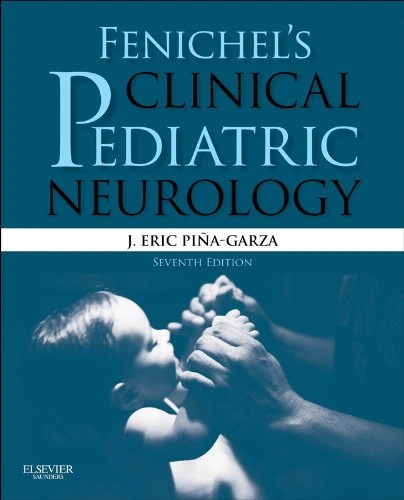
Strengths:
- Comprehensive coverage: Fenichel’s Clinical Pediatric Neurology provides in-depth coverage of all major pediatric neurological disorders.
- Clinical focus: The textbook emphasizes clinical presentation, diagnosis, and management, making it a valuable resource for medical students, residents, and practitioners.
- Includes numerous case studies: The textbook incorporates numerous case studies that illustrate key concepts and demonstrate real-world applications.
- Well-organized and easy to navigate: The textbook follows a logical structure, making it easy to find the information you need.
Weaknesses:
- Can be dense and challenging: The comprehensive nature of the textbook and the detailed information presented can be challenging for beginners.
- Focuses solely on pediatric neurology: This textbook does not cover other areas of pediatrics.
D. Pediatric Infectious Diseases
1) Feigin and Cherry’s Textbook of Pediatric Infectious Diseases:
This is a comprehensive textbook on pediatric infectious diseases, covering all aspects of infections in children.
The 8th edition (published in 2019) includes the latest information on emerging infections, antimicrobial resistance, and vaccination strategies.
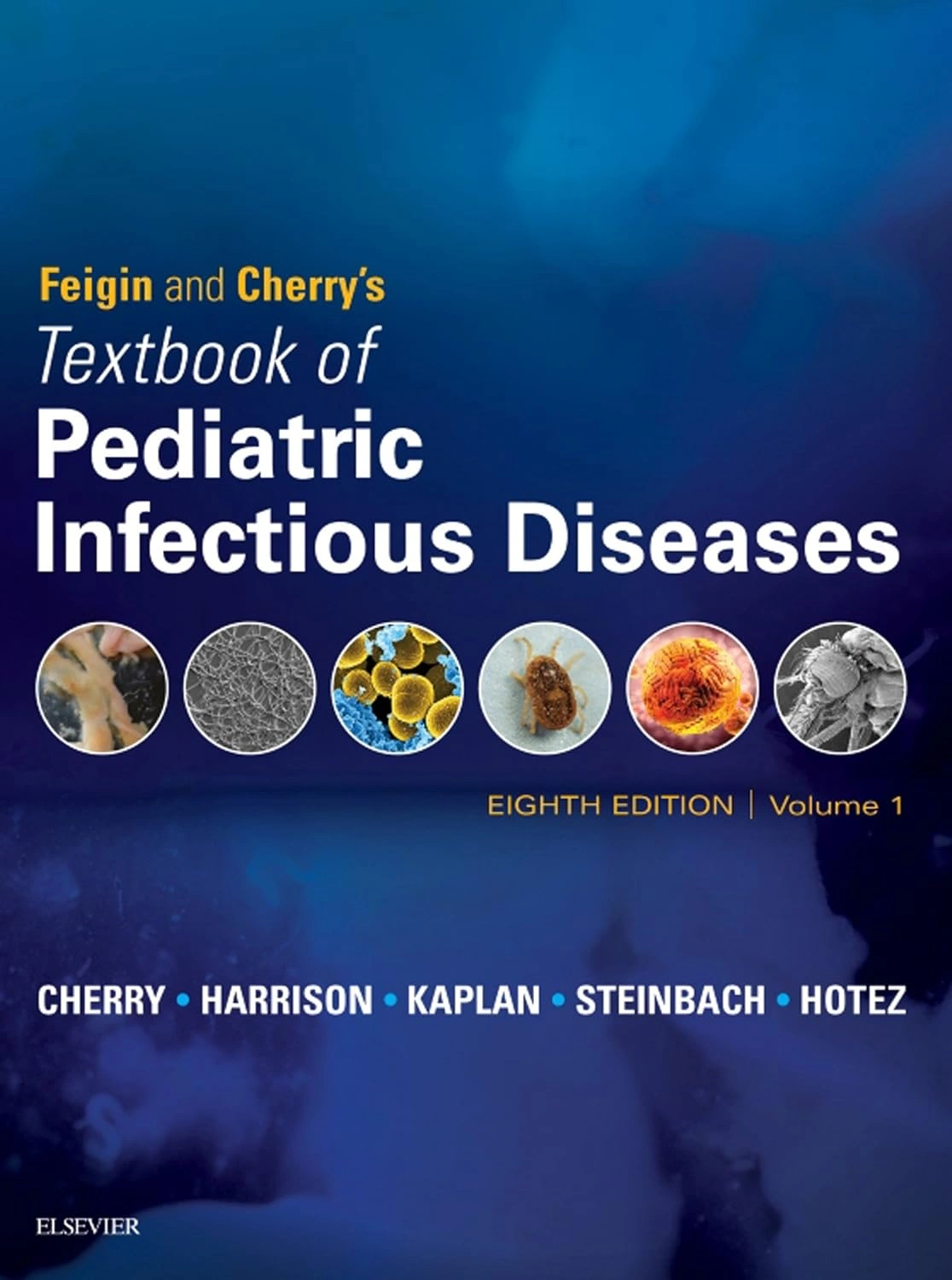
Strengths:
- Comprehensive coverage: Feigin and Cherry’s Textbook of Pediatric Infectious Diseases provides in-depth coverage of all major pediatric infectious diseases.
- Authored by leading experts: The contributing authors are renowned experts in their respective fields, ensuring that the information presented is accurate and up-to-date.
- Includes detailed information on pathogenesis, diagnosis, and management: The textbook provides detailed information on the pathogenesis, diagnosis, and management of pediatric infections, including antimicrobial therapy and infection control measures.
- Includes the latest information on emerging infections: The 8th edition includes updated information on emerging infections, such as Zika virus and COVID-19.
Weaknesses:
- Can be overwhelming for beginners: The comprehensive nature of the textbook and the detailed information presented can be challenging for those new to the field.
- Focuses solely on pediatric infectious diseases: This textbook does not cover other areas of pediatrics.
E. Pediatric Surgery
1) Ashcraft’s Pediatric Surgery:
This is a leading textbook on pediatric surgery, providing comprehensive coverage of all aspects of surgical care in children.
The 7th edition (published in 2021) includes the latest advances in minimally invasive surgery, fetal surgery, and surgical oncology.
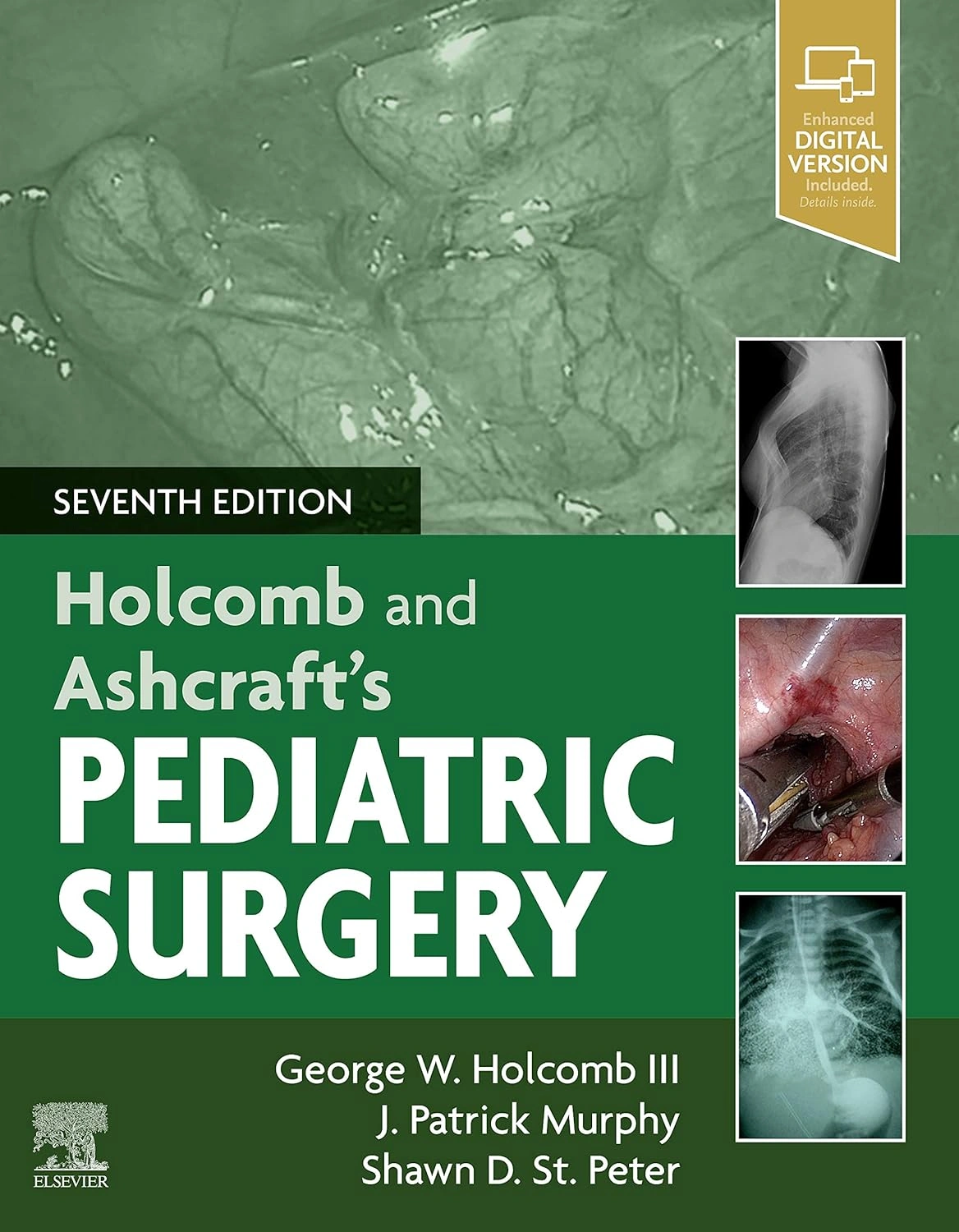
Strengths:
- Comprehensive and authoritative: Ashcraft’s Pediatric Surgery is widely regarded as the definitive textbook on pediatric surgery.
- Covers a wide range of topics: The textbook encompasses all aspects of surgical care in children, from common procedures to complex congenital anomalies.
- Includes numerous illustrations and diagrams: The text is richly illustrated with high-quality images, diagrams, and tables that enhance understanding and clarify complex surgical techniques.
- Evidence-based approach: The textbook emphasizes evidence-based practice, providing references and supporting data for the information presented.
Weaknesses:
- Can be challenging for beginners: The comprehensive nature of the textbook and the detailed information presented can be challenging for those new to the field.
- Focuses solely on pediatric surgery: This textbook does not cover other areas of pediatrics.
To make the most of your textbooks, it’s important to choose the right ones for your learning style.
Choosing the Right Pediatrics Textbooks
With a multitude of pediatrics textbooks available, selecting the right ones for your needs can seem daunting. Consider these factors to guide your decision:
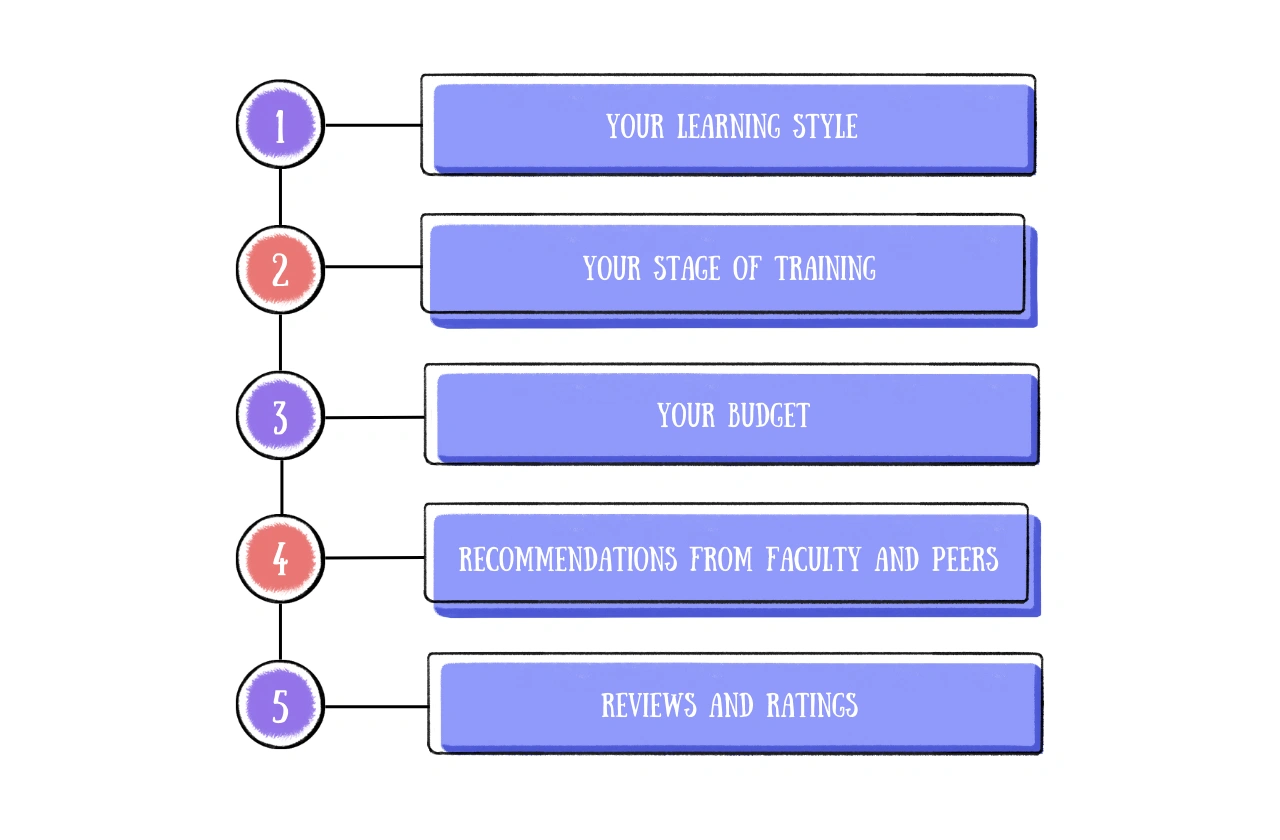
1) Your Learning Style: Reflect on your preferred learning style. Do you prefer concise texts or comprehensive ones? Do you learn best from visual materials or written explanations? Choose textbooks that align with your learning preferences.
2) Your Stage of Training: Consider your current stage of training. As an MBBS student, you may prioritize core textbooks that provide a broad overview of pediatrics. As you progress in your training, you may delve into specialized texts that focus on specific areas of interest.
3) Your Budget: Textbooks can be expensive. Consider your budget and explore options such as used books, digital versions, or library resources.
4) Recommendations from Faculty and Peers: Seek recommendations from your faculty and peers. They can offer valuable insights into the strengths and weaknesses of different textbooks.
5) Reviews and Ratings: Read online reviews and ratings of different textbooks to get a sense of their content, clarity, and overall quality.
By carefully selecting and utilizing these resources, you can enhance your understanding of pediatrics and achieve academic success.
Conclusion
Mastering pediatrics is a lifelong journey that requires dedication, curiosity, and a commitment to continuous learning.
Textbooks are essential tools on this journey, providing the foundation of knowledge and clinical skills necessary to care for children.
By choosing the right textbooks, utilizing diverse learning resources, and embracing active learning strategies, you can navigate the world of pediatrics with confidence and prepare yourself for a rewarding career in child health.
Remember that learning is not merely about accumulating facts but about developing critical thinking skills, cultivating empathy, and fostering a genuine passion for the well-being of children.

